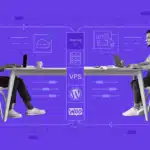
As technology advances, so do the tactics employed by cybercriminals seeking to exploit vulnerabilities and compromise sensitive information.
In this rapidly evolving digital landscape, it is essential for businesses to proactively safeguard their websites against emerging threats.
This article provides comprehensive insights into common cyber attacks faced by websites, including malware, phishing, ransomware, DDoS attacks, and data breaches.
By understanding these threats and implementing preventive measures, organizations can fortify their online assets and maintain the trust of their users.
Key Takeaways
- Regularly update software and plugins to address vulnerabilities and minimize the risk of infections.
- Implement strong authentication measures, such as multi-factor authentication, to prevent unauthorized access.
- Educate users about phishing defense strategies and utilize email filtering systems to detect and block suspicious emails.
- Establish a well-defined incident response plan and conduct thorough forensic investigations to mitigate and contain data breaches.
An Overview of emerging cyber threats
An overview of the emerging threats in cybersecurity can provide valuable insights into the risks faced by websites and the measures required to safeguard them. In today’s digital landscape, websites are constantly under attack from various cyber threats such as malware, phishing, and ransomware. To protect against these threats, it is essential to implement effective malware prevention techniques, phishing defense strategies, ransomware protection measures, intrusion detection systems (IDS) implementation, and user security education.
Malware, a malicious software designed to disrupt or damage computer systems, is one of the most common threats websites face. Implementing robust malware prevention techniques such as regularly updating software, using strong passwords, and conducting regular malware scans can help mitigate the risk of infections.
Phishing attacks, which involve tricking users into divulging sensitive information, are another major concern. Organizations can combat phishing attacks by implementing strong authentication measures, educating users about phishing defense strategies, and utilizing email filtering systems to detect and block suspicious emails.
Ransomware, a type of malware that encrypts data and demands a ransom for its release, is also on the rise. Protecting against ransomware requires a multi-layered approach, including regular data backups, network segmentation, and security awareness training for employees.
Intrusion detection systems (IDS) play a crucial role in identifying and responding to potential threats. Implementing IDS can help detect and prevent unauthorized access, anomalous activities, and security breaches.
Finally, user security education is vital in creating a strong defense against cyber threats. By providing regular training and promoting security best practices, organizations can empower their users to be vigilant and proactive in safeguarding their data and the website.
What are some essentials for your website security- Read Here
Addressing Risks of Malware, Phishing, and Ransomware
As cyber threats continue to evolve, it is crucial for businesses to address the risks of malware, phishing, and ransomware.
To protect against malware infections, organizations should focus on identifying and preventing them through robust security measures and regular system scans.
Additionally, implementing strategies to counter phishing attacks, such as educating users about phishing techniques and implementing email filters, can help mitigate the risk of falling victim to fraudulent schemes.
Lastly, safeguarding against ransomware requires implementing comprehensive backup solutions, keeping software up to date, and training employees to recognize and report suspicious activities.
Identifying and Preventing Malware Infections
Malware infections pose a significant risk to website security and require vigilant identification and prevention. To effectively protect your website, it is essential to implement robust malware detection and prevention measures.
This includes regularly scanning your website for malware, using reliable antivirus software, and keeping all software and plugins up to date.
Additionally, implementing strong phishing attack countermeasures is crucial in preventing hackers from tricking users into disclosing sensitive information. This can include training your employees to identify phishing emails and implementing email filters to block suspicious emails.
Furthermore, ransomware defense tactics are essential to protect your website from being held hostage by cybercriminals. This involves regularly backing up your data, using strong passwords, and implementing security patches.
Strategies to Counter Phishing Attacks
To effectively safeguard your website against phishing attacks, it is crucial to implement proactive strategies that prioritize user education and awareness.
Here are three key strategies that can help you counter phishing attacks and minimize the risks of data breaches:
1. Continuous security enhancement
- Regularly update your security protocols, software, and systems to stay one step ahead of cybercriminals.
- Implement multi-factor authentication and encryption techniques to add an extra layer of protection.
2. Security training and skill development
- Provide comprehensive security training to your employees, teaching them how to identify and report phishing attempts.
- Encourage them to stay vigilant and adopt best practices to protect sensitive information.
3. Proactive cybersecurity measures
- Implement robust firewalls, intrusion detection systems, and email filters to identify and block phishing attempts.
- Conduct regular security audits and vulnerability assessments to identify potential weaknesses and address them promptly.
How UI/UX can help you develop seamless and agile website- Read Here
Protection Measures Against Ransomware
Implementing effective protection measures against ransomware is essential for safeguarding your website from potential cyber attacks. Ransomware poses a significant threat to organizations, as it encrypts valuable data and demands a ransom for its release. To protect your website, it is crucial to implement robust cybersecurity measures.
Firstly, consider implementing a comprehensive data breach response plan that outlines the steps to be taken in the event of an attack. This plan should include procedures for isolating infected systems, notifying affected parties, and restoring data from backups.
Additionally, continuous security improvement is essential. Regularly update and patch your software to address any vulnerabilities that could be exploited by ransomware. Conduct cybersecurity training initiatives to educate your employees on best practices and raise user security awareness.
Finally, consider investing in DDoS attack mitigation services to protect your website from these types of attacks.

Strategies to Combat DDoS Attacks and Data Breaches
As cyber attacks continue to evolve, organizations must implement effective strategies to combat DDoS attacks and data breaches.
Mitigating the impact and ensuring quick recovery from DDoS attacks is crucial to maintaining website availability and user trust.
Additionally, implementing robust data breach prevention measures and establishing an incident response plan are essential to safeguard sensitive data from unauthorized access.
Mitigating DDoS Attack Impact and Recovery
Mitigating the impact of DDoS attacks and facilitating recovery is crucial for safeguarding your website against cyber threats. To enhance your website’s resilience against DDoS attacks, consider the following strategies:
- Implement a robust DDoS mitigation solution: Invest in a reliable DDoS mitigation service or solution that can detect and mitigate attacks in real-time. This can help ensure that your website remains accessible to legitimate users even during an attack.
- Conduct regular DDoS attack simulations: Regularly test your website’s resilience against DDoS attacks by conducting simulated attacks. This will help identify any vulnerabilities and allow you to fine-tune your mitigation strategies.
- Establish a comprehensive incident response plan: Develop a well-defined incident response plan that outlines the steps to be taken in the event of a DDoS attack. This plan should include clear roles and responsibilities, communication protocols, and recovery procedures.
Data Breach Prevention and Incident Response
To effectively combat DDoS attacks and data breaches, organizations must prioritize data breach prevention and establish robust incident response protocols. With cyber threats becoming more sophisticated, it is crucial for companies to take proactive measures to protect their sensitive information. This includes implementing strong security measures, such as encryption and multi-factor authentication, to safeguard data from unauthorized access.
Additionally, organizations should regularly conduct vulnerability assessments and penetration testing to identify and address any weak points in their systems. In the event of a data breach, having a well-defined incident response plan is essential. This plan should include clear protocols for containing the breach, notifying affected parties, and conducting forensic investigations to determine the extent of the breach.
By prioritizing data breach prevention and having a robust incident response plan in place, organizations can effectively combat DDoS attacks and mitigate the impact of data breaches.
| Strategy | Description | Benefits |
|---|---|---|
| Regular vulnerability | Conducting regular vulnerability assessments and penetration testing to identify and address weak points in systems | Identifies vulnerabilities before they can be exploited, allowing for timely remediation |
| Multi-factor | Implementing multi-factor authentication to add an extra layer of security and prevent unauthorized access | Reduces the risk of unauthorized access even if passwords are compromised |
| Incident response | Establishing a well-defined incident response plan that outlines clear protocols for containing and mitigating breaches | Enables organizations to respond quickly and effectively to minimize the impact of a data breach |
| Forensic investigations | Conducting thorough forensic investigations to determine the scope and impact of a data breach | Helps in understanding the extent of the breach, identifying the source, and preventing future incidents |
Securing Sensitive Data Against Unauthorized Access
Implementing strong security measures is crucial for securing sensitive data against unauthorized access and combatting DDoS attacks and data breaches. To effectively protect your website and sensitive information, consider the following strategies:
- Implement a robust firewall: A firewall acts as a barrier between your internal network and the external world, preventing unauthorized access. Ensure your firewall is properly configured and regularly updated to defend against evolving threats.
- Utilize encryption techniques: Encrypting sensitive data ensures that even if it is intercepted, it remains unreadable to unauthorized individuals. Implement strong encryption algorithms and ensure encryption is used for data both at rest and in transit.
- Implement multi-factor authentication: Enhance the security of user accounts by requiring multiple factors for authentication, such as passwords, biometrics, or one-time verification codes. This adds an extra layer of protection, making it more difficult for unauthorized individuals to access sensitive data.
Proactive Measures for Continuous Security Enhancement
To continuously enhance the security of your website, there are several proactive measures you can take.
First, implementing Intrusion Detection Systems (IDS) can help detect and prevent unauthorized access and potential attacks.
Second, educating and raising awareness among your users about security best practices can significantly reduce the risk of successful attacks.
Lastly, investing in continuous security training and skill development for your team can ensure they are equipped with the knowledge and expertise to effectively respond to evolving threats.
Implementing Intrusion Detection Systems (IDS)
Incorporating an effective Intrusion Detection System (IDS) is a crucial step in continuously enhancing the security of your website. An IDS is a software or hardware tool that monitors network traffic and system activities to identify any malicious or suspicious behavior.
Here are three reasons why implementing an IDS is essential for your website’s security:
- Early threat detection: An IDS can quickly detect and alert you about any unauthorized access attempts, malware infections, or suspicious activities on your website. This allows you to take immediate action to prevent any potential damage or data breaches.
- Real-time monitoring: An IDS continuously monitors your website’s network traffic and system logs, providing you with real-time insights into any potential security threats. This proactive approach allows you to stay one step ahead of cybercriminals and take necessary measures to protect your website.
- Compliance requirements: Many industries have specific compliance requirements that mandate the use of IDS. Implementing an IDS not only helps you meet these requirements but also demonstrates your commitment to maintaining a secure online environment for your users.
User Education and Awareness on Security Best Practices
One important aspect of continuously enhancing the security of your website is ensuring user education and awareness on security best practices. By educating your users about potential threats and how to protect themselves, you can greatly reduce the risk of cyber attacks and data breaches.
To help you get started, here are some key security best practices that you should communicate to your users:
| Security Best Practices | Explanation |
|---|---|
| Use Strong Passwords | Encourage users to create unique, complex passwords that are difficult to guess |
| Enable Two-Factor Authentication | Implement an additional layer of security by requiring users to provide a second form of authentication, such as a code sent to their mobile device |
| Keep Software Updated | Regularly update software, including operating systems, web browsers, and plugins, to ensure they have the latest security patches |
| Be Wary of Phishing | Teach users to be cautious of suspicious emails, messages, and websites that may attempt to steal their personal information |
| Practice Safe Browsing | Advise users to only visit trusted websites, avoid clicking on suspicious links, and use antivirus software to detect and block malicious websites |
| Regularly Backup Data | Emphasize the importance of regularly backing up important data to prevent loss in case of a ransomware attack or hardware failure |
Continuous Security Training and Skill Development
Implementing continuous security training and skill development is crucial for enhancing the overall security of your website and effectively countering emerging cyber threats. In today’s rapidly evolving threat landscape, it is essential to stay updated with the latest security practices and technologies.
Here are three proactive measures you can take to continuously enhance your website’s security:
- Regular Training Sessions: Conduct regular training sessions for your employees to educate them about the latest security threats and best practices. This will help them recognize and respond to potential threats effectively, reducing the risk of successful attacks.
- Skill Development Programs: Invest in skill development programs to enhance the technical expertise of your IT team. By equipping them with advanced knowledge and skills, they will be better equipped to defend against sophisticated cyber attacks.
- Simulation Exercises: Organize simulated cyber attack exercises to test the effectiveness of your security measures. These exercises will help identify any weaknesses in your system and allow you to make necessary improvements to strengthen your defenses.
Final words
To effectively protect your website against emerging cyber threats, it is imperative to prioritize comprehensive security measures. By implementing a multi-layered approach to security, you can minimize the risks posed by malware, phishing attacks, ransomware, DDoS attacks, and data breaches. However, it is important to understand that no security measure is foolproof, and attackers are constantly evolving their techniques. Therefore, it is essential to stay updated on the latest threats and regularly review and enhance your security measures.
As a final note, below is a table summarizing the key strategies discussed in this article to safeguard your website against cyber attacks:
| Threats | Prevention Strategies | Protection Measures |
|---|---|---|
| Malware | Implement strong antivirus software | Regularly update and patch software |
| Phishing Attacks | Train employees on recognizing phishing emails | Use email authentication techniques |
| Ransomware | Regularly backup data and store offline | Employ behavior-based detection systems |
| DDoS Attacks and Breaches | Use traffic filtering and rate-limiting | Encrypt sensitive data |
Frequently Asked Questions (FAQ)
How Can a Website Owner Detect if Their Website Has Been Compromised by Malware?
To detect if a website has been compromised by malware, website owners can utilize security tools such as website scanners, malware detection software, and monitoring for suspicious activity or changes in website behavior. Regular security audits are also recommended.
Are There Any Specific Warning Signs or Indicators That a Website Is Being Targeted by a Phishing Attack?
Warning signs of a website targeted by phishing attacks include suspicious emails requesting personal information, unusual website behavior such as redirects or pop-ups, and unexpected changes in login credentials or website content. Stay vigilant and implement strong security measures.
What Steps Can Be Taken to Recover a Website That Has Been Affected by a DDoS Attack?
To recover a website affected by a DDoS attack, it is crucial to take immediate action by implementing measures such as traffic filtering, load balancing, and using a content delivery network to mitigate the attack and restore normal website functionality.
How Can a Website Owner Ensure That Sensitive User Data Is Protected From Unauthorized Access?
To ensure the protection of sensitive user data from unauthorized access, website owners should implement robust security measures such as encryption, access controls, regular vulnerability assessments, and ongoing monitoring to detect and respond to potential breaches.
Are There Any Specific Tools or Technologies That Can Be Used to Enhance the Security of a Website on an Ongoing Basis?
Yes, there are specific tools and technologies that can be used to enhance the security of a website on an ongoing basis. These include web application firewalls, vulnerability scanners, intrusion detection systems, and security information and event management systems.







